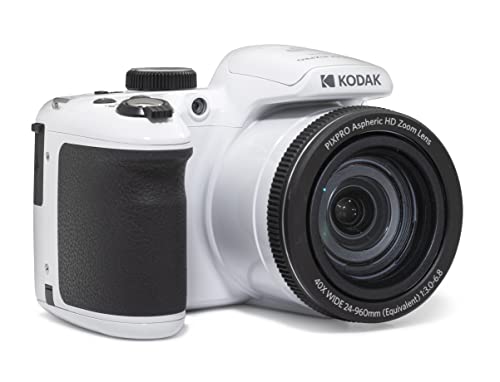


Security cameras have become an integral part of modern-day surveillance and security systems, providing a watchful eye over homes, businesses, and public spaces. But have you ever wondered when these essential devices were first created?
The concept of security cameras dates back to the late 19th century, with the invention of the first closed-circuit television (CCTV) system by German engineer Walter Bruch in 1942. This early system was used for monitoring the launch of V-2 rockets during World War II.
Since then, security cameras have undergone significant advancements in technology, evolving from bulky, analog devices to sleek, high-definition digital cameras that can be accessed remotely via the internet. Today, security cameras play a crucial role in deterring crime, monitoring activities, and ensuring the safety of people and property.
The Invention of Security Cameras
Security cameras, also known as closed-circuit television (CCTV) cameras, were invented in Germany in 1942 by Walter Bruch. Bruch’s invention was initially used for monitoring the launch of V-2 rockets during World War II. The first commercial use of security cameras began in the 1960s, with banks and other businesses installing them to enhance security measures.
Over the years, advancements in technology have significantly improved security cameras’ functionality and capabilities. Modern security cameras come with features such as high-definition video recording, night vision, motion detection, and remote access via smartphones and computers.
Today, security cameras are widely used in various settings, including homes, businesses, public spaces, and government facilities, to deter crime, monitor activities, and enhance overall security. The evolution of security cameras continues, with new innovations constantly being introduced to meet the growing demands for surveillance and security solutions.
Early Beginnings of Surveillance
Surveillance has a long history, dating back to ancient civilizations. The concept of watching over others for security purposes has been around for centuries. In the early days, surveillance was often carried out by human guards or watchmen stationed at strategic points to monitor activities.
However, the modern surveillance industry began to take shape in the mid-20th century with the development of closed-circuit television (CCTV) systems. These systems allowed for remote monitoring of various locations, providing a more efficient and cost-effective way to ensure security.
Over time, advancements in technology have led to the development of sophisticated security cameras with features like motion detection, night vision, and remote access. Today, security cameras are an essential tool for maintaining safety and security in various settings, from homes and businesses to public spaces.
First Patent for Video Surveillance
In 1942, the first patent for a closed-circuit television (CCTV) system was filed by German engineer Walter Bruch. This system was designed for the purpose of monitoring the launch of V-2 rockets during World War II. The technology evolved over the years, leading to the development of modern security cameras used for surveillance and security purposes today.
Evolution of Security Camera Technology
Security cameras have come a long way since their inception. The first security cameras were developed in the early 20th century, with the goal of monitoring and securing public spaces. These early cameras were bulky and expensive, and could only capture low-quality black-and-white images.
Introduction of Closed-Circuit Television (CCTV)
In the 1960s, the introduction of Closed-Circuit Television (CCTV) revolutionized the security camera industry. CCTV cameras allowed for real-time monitoring and recording of video footage, making it easier to catch criminals in the act. These cameras were still analog and required physical tapes for recording.
Transition to Digital Technology
In the 1990s, security cameras started transitioning to digital technology, enabling higher-resolution video recording and easier storage of footage. This shift also allowed for the integration of advanced features such as motion detection and remote access, making security systems more efficient and user-friendly.
Modern Applications of Surveillance Cameras
Surveillance cameras are widely used in various modern applications to enhance security and monitor activities. Some common applications include:
1. Home Security
Many homeowners use surveillance cameras to monitor their property and deter potential intruders. These cameras can provide real-time footage and alerts to homeowners, allowing them to take necessary action in case of any security threats.
2. Traffic Monitoring
Surveillance cameras are often used for traffic monitoring and management in cities and on highways. These cameras help authorities monitor traffic flow, identify accidents, and enforce traffic laws more effectively.
Future Trends in Video Security Systems
As technology advances, video security systems are evolving to meet the changing needs of businesses and individuals. Here are some of the future trends in video security systems:
1. Artificial Intelligence (AI) Integration
AI integration in video security systems allows for advanced analytics and real-time monitoring. AI algorithms can detect anomalies, track objects, and even predict potential security threats, making surveillance more efficient and effective.
2. Cloud-Based Storage and Management
Cloud-based storage and management solutions are becoming increasingly popular for video security systems. This allows for remote access to footage, easy scalability, and improved data security. Cloud-based systems also make it easier to store and access large amounts of video data.
| Trend | Description |
|---|---|
| 3. 4K and Ultra HD Video | Advancements in camera technology are leading to the widespread adoption of 4K and ultra HD video in security systems. Higher resolution video provides clearer images and better detail, enhancing overall security monitoring. |
| 4. Mobile Integration | Mobile integration allows users to access their video security systems from anywhere via smartphones or tablets. This enables remote monitoring, alerts, and control, giving users greater flexibility and peace of mind. |







